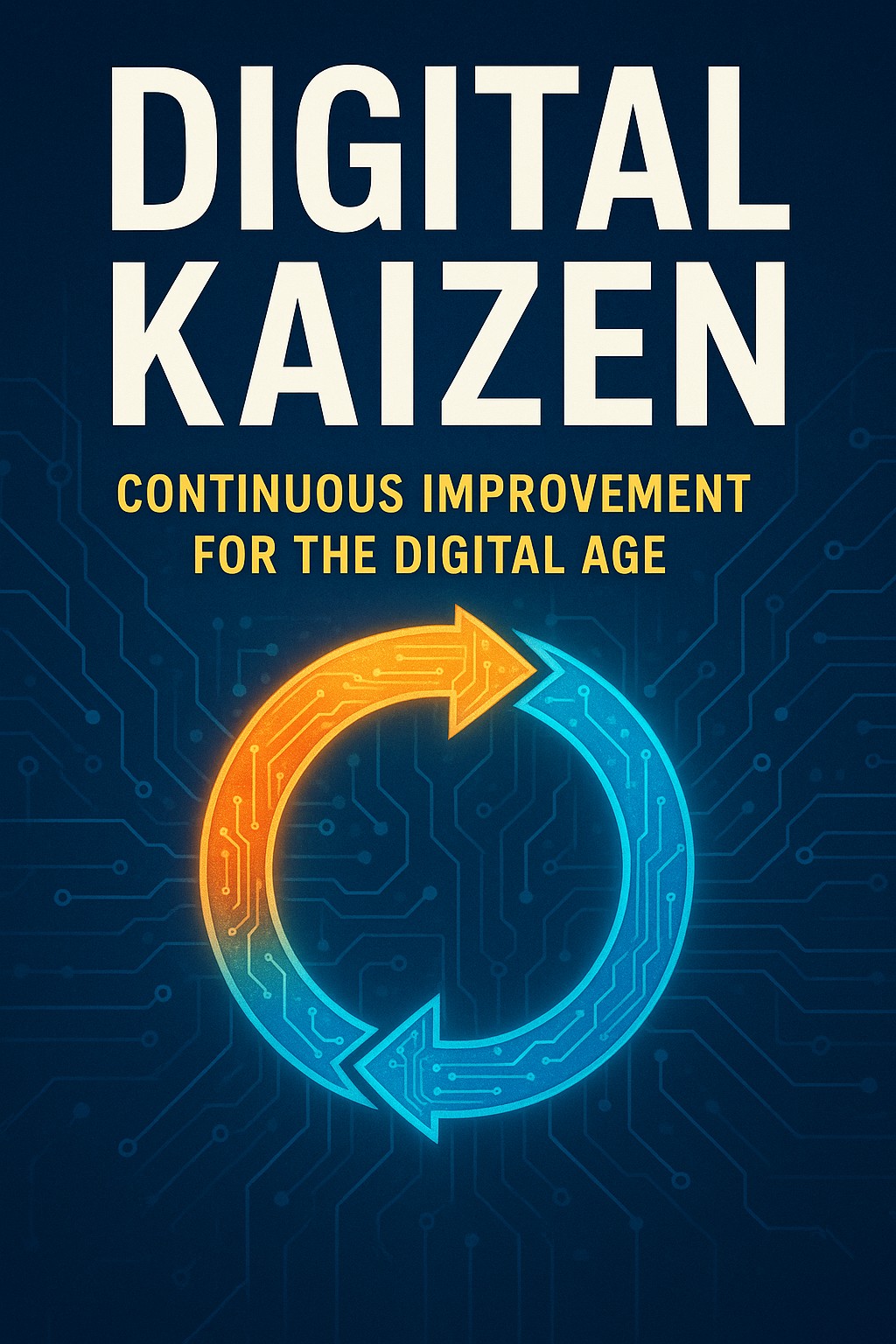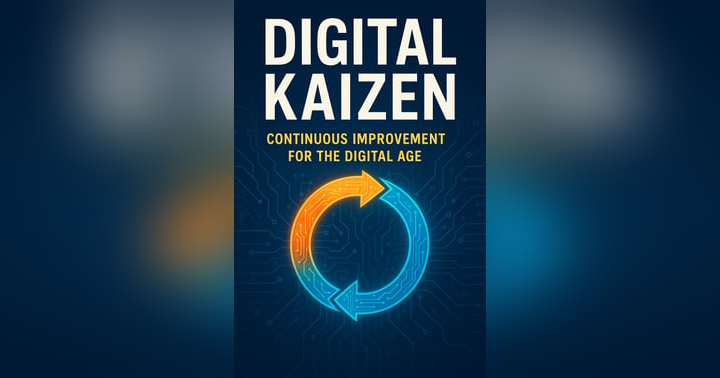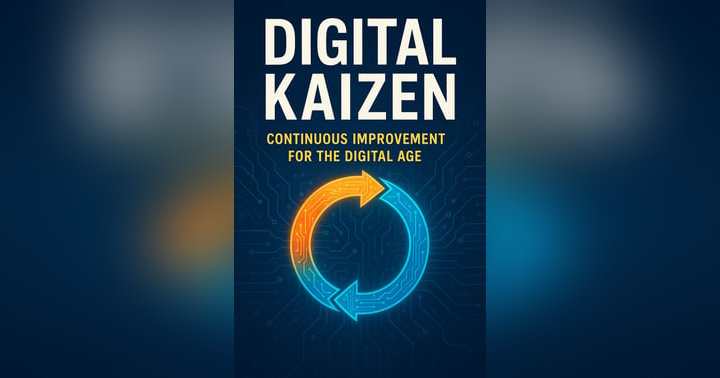AI That Feels More Human: How Cambridge Rewrote Back Office Operations

Cambridge just launched something that makes every other financial services innovation look like a toy.
Their AI digital associate reduces a portion of the account opening process from minutes to seconds. Not just faster. Not just more efficient. We're talking seconds.
When I first heard about this breakthrough, my immediate reaction was simple: Let's go!
This is our chance to finally catch up with other industries that have been delivering the user experiences we've all come to expect. Think about your bank app. Think about Amazon. Low friction, easy, fast, anticipating your needs.
Financial services has been playing catch-up for too long.
The "What If" Moment That Changed Everything
Valarie Vest (Val) Vest, Cambridge's Chief Experience Officer, describes the breakthrough moment differently than you might expect.
"The 'aha moment' was really more of a 'what if,'" she told me. "During an AI strategy session with our partner providers, we learned about the realities of agentic AI. That discussion shifted everything: Agentic AI went from something I had only read about in a book to something with real application in our industry."
That shift from theoretical to practical matters.
Cambridge chose one highly manual part of the process that didn't require a personalized touch.
What once took nearly 20 minutes per account now happens in seconds. That’s efficiency at scale —transforming how their team works every day.
The Technical Reality Behind the Speed
Sean Van Moorleghem , Cambridge's Chief Technology Officer, explained what makes this level of efficiency possible.
"The ability to horizontally scale the agents enables us to quickly expand our resource pool as needed," he said. "We can add 'workers' or agents on demand by deploying additional computing power and instances."
By combining agentic AI with cloud technologies, they can seamlessly scale up or down based on transaction volumes.
But here's what surprised me most about Sean's approach.
When I asked about his biggest technical surprise during implementation, he said:
"I initially expected we'd need to modify our business processes for the technology to work, but that wasn't the case. In fact, I can't think of a single step that changed. The technology performs the same actions a human would for this part of the process."
The AI didn't force them to reinvent their workflows. It learned them.
Where AI Belongs and Where It Doesn't
I've spent over two decades in financial services, and I can tell you exactly where we want AI to work: paperwork and processing.
None of us got into this business to do paperwork.
Val puts it perfectly: "No one likes paperwork, so that's exactly where we started."
Cambridge implemented agentic AI in a highly manual part of the process that doesn't require a personalized touch. The leaders of the teams that normally handle this work are now guiding their digital associate.
The result? An increase in personalized human service.
Their teams can identify opportunities to be proactive much faster because they're not buried in repetitive tasks.
When I asked Val what she'd tell a client about why this AI tool actually makes their experience more human, not less, her answer was immediate:
"It gives our team more space and time to engage in meaningful conversations, solving big problems and anticipating ways to improve the service experience. I see more human connection with agentic AI, not less."
The Human Side of AI Implementation
Here's what most AI case studies skip: the human reaction.
When Val first discussed this technology with the teams that would be impacted, associates naturally wondered how it would affect their work.
Some were excited. Some were curious. Some were concerned.
The key has been having personalized one on one conversations with associates. Taking the time to understand what everyone is feeling, and addressing their biggest concerns.
The most important point they've communicated: this technology will help offload some of the more tedious aspects of their job and free up more time to work directly with financial professionals.
Cambridge hasn't eliminated a single associate despite this automation.
Instead, they're seeing new roles that didn't exist before. For individuals willing to invest the time and learn more about AI, the opportunities are expanding.
Quality Over Speed
Sean subscribes to what he calls the "crawl, walk, run" approach.
"Speed with automation isn't the top priority," he explained. "It comes after quality and experience. If either of those fall short, it doesn't matter how fast we're going."
That philosophy shows up in their testing framework.
They put the agent through robust testing, consistent with how they approach all technology releases. Once deployed, they incorporated "human-in-the-loop" testing to continually monitor and validate performance.
Val has the leader of their quality review team guiding this effort from a business perspective.
"To me, speed is just one component of quality," she said. "The other factor that drives quality is accuracy, and our internal testing of this tool has shown it to be remarkably precise. When you combine speed with accuracy, you get performance that really does elevate the client experience."
The digital associates follow the same access controls, provisioning standards, and oversight protocols as human associates.
The business process and control frameworks remain unchanged.
The Fire Metaphor
When I asked Val what advice she'd give to other financial services leaders who are hesitant about AI, she offered a metaphor I won't forget.
"I see AI like fire: it can keep you warm, cook your food, and be beautiful on a starry night, but it can also burn and destroy. How humans use fire matters."
She continued: "The way we see it, if you're not finding ways to incorporate AI into your business, you're falling behind. Use AI where it can help and elevate the human experience."
That's the Digital Kaizen philosophy in practice.
Small, continuous improvements through technology that enhance rather than replace human capabilities.
The Technical Foundation That Makes It Work
Sean shared something that other firms need to hear.
When I asked what technical capabilities prevent other firms from implementing similar solutions, he highlighted two critical factors.
"First, having a clear understanding and strategy around data is critical. Your results with AI can vary widely if data strategy isn't at the center."
"Second, it's more about mindset than technical capability. Staying on the leading edge of these technologies requires a 'test and learn' approach and the resilience not to get discouraged."
Cambridge works with established partners, which not only supports their tech strategy but also sets them up for success on the projects themselves.
At the enterprise architecture level, they evaluate whether new technology fits in their tech stack. That means looking at security and vulnerabilities, the gaps it fills, and the problems it solves.
The bigger technical hurdles come when the process leaves your own four walls and involves third parties. At that point, it's about aligning different AI strategies and philosophies.
What Surprised Them Most
Val didn't realize how much faster this tool would help them resolve items that the technology "kicks out" or can't process.
"Work will always come in with NIGOs (Not in Good Order), and this helps us focus our resources where help is most needed," she explained.
The tool doesn't eliminate problems. It surfaces them faster so humans can solve them more effectively.
That's a different way to think about AI's role.
Looking Forward
Cambridge's digital associate is currently focused on direct account opening, but they're already expanding. Brokerage account opening is near completion.
Sean noted that brokerage has its own quirks, but the good news is they've already built a lot of the integration points into workflow and content platforms off their first use case.
The foundation is there.
Val is actively exploring ways to bring more AI tools to their financial professionals in their offices. "That's really the next step for us, in addition to finding other ways to use the technology on a larger scale internally."
The administrative tasks that currently consume hours of advisor time could be reduced to minutes. The manual processes that delay client outcomes could be streamlined without losing the human touch that makes advisory relationships valuable.
Practical Lessons for Financial Advisors
Cambridge's success offers a roadmap for thoughtful AI integration.
Start small and see what you can learn. Don't try to solve everything at once. Paperwork is a great place to begin.
Have personalized conversations with your team. Understand their concerns and address them honestly.
Focus on quality and experience before speed. If those fall short, velocity doesn't matter.
Use human-in-the-loop testing to continually monitor and validate performance.
Maintain your existing business processes and control frameworks. Let the AI learn your workflows rather than forcing you to change them.
Develop a clear data strategy. Your results with AI can vary widely if data strategy isn't at the center.
Adopt a test and learn approach. Stay resilient when things don't work perfectly the first time.
The Real Opportunity
Cambridge's breakthrough isn't just about faster account opening. It's about reimagining what's possible when technology serves human expertise rather than replacing it.
For financial advisors, this represents an opportunity to reclaim time for what matters most: helping clients navigate complex financial decisions with confidence.
For clients, especially those facing retirement transitions, this means faster access to the guidance they need without sacrificing the personal attention they deserve.
Val's fire metaphor stays with me.
AI can keep us warm or it can burn us. How we use it matters.
Cambridge chose to use it where it elevates the human experience. Where it creates more space for meaningful conversations. Where it allows teams to be more proactive rather than buried in paperwork.
The future of financial services isn't about choosing between human expertise and technological efficiency.
Cambridge shows us we can have both.
That's a future worth building toward.
This is the kind of thoughtful transformation Digital Kaizen is all about: small, smart changes that create exponential impact.
Chris Hensley is a financial advisor, podcast host, and creator of the upcoming book Digital Kaizen: Small Loops, Big Shifts in an AI World. With over two decades of experience guiding clients through complex financial decisions, Chris now blends his expertise in retirement planning with cutting-edge tools like AI, voice-first thinking, and behavioral science. Digital Kaizen is a philosophy for those who want to grow sustainably in a world that moves fast—combining human wisdom, technology, and tiny, honest loops of improvement. This article is a preview of the ideas explored in Digital Kaizen, due out later this year.👉 Want early access to tools and insights from Digital Kaizen? https://digital-kaizen-book.kit.com/6a16de43b8
Grab the free Digital Kaizen Starter Guide and explore how to build better systems for thinking, learning, and working in an AI world.






